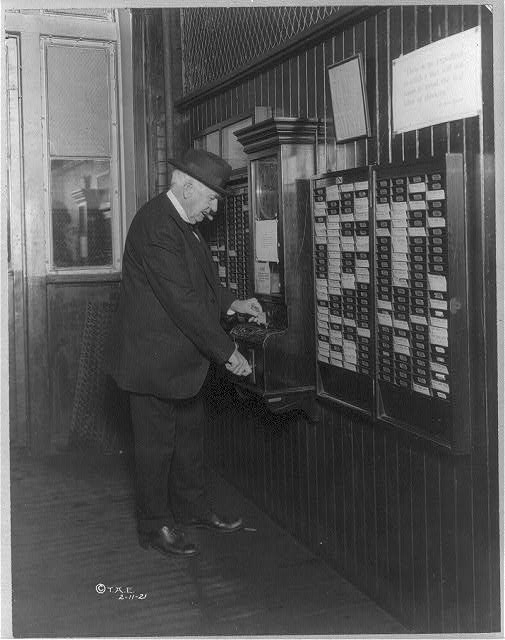The time clock, which enables employers to verify the time employees start and leave the job, was invented in 1888 by Willard Bundy, a jeweler who used the mechanical timepiece to track employee hours in order to figure their pay.
There’s a famous picture of 74-year old Thomas Edison clocking in at his lab in Menlo Park, NJ (he used it to track the hours spent on projects and not to monitor workers’ hours for purposes of wages).

Today, time clocks are still in use in many enterprises and are readily available for purchase at Staples and other office supply companies.
Professionals, such as attorneys, who bill for their time use various tracking systems for their workday. The question I raise is should every business owner clock in and out each day? From a tax perspective, it can’t hurt.
Compensation to C corporation owner-employees
The corporation can deduct compensation paid to an owner-employee only if it is “reasonable.” This has come to mean what an independent investor would pay under the circumstances. There are various factors used to make this determination, one of which is the time and activities.
In one recent case, a doctor who owned four ophthalmology surgery and care centers took salary and bonuses of $2.7 million, which the IRS claimed was largely unreasonable and the Tax Court agreed. He didn’t produce evidence of any kind that would demonstrate the compensation was reasonable. Would time cards (or similar evidence) showing what he did with his time have been helpful? Sure.
Compensation to S corporation owner-employees
These business owners need to be paid reasonable compensation for work performed. The IRS is on the hunt for such individuals who may understate compensation as a way to dodge FICA taxes, so S corporation tax returns showing little or no compensation to owner-employees when the corporation is profitable raises red flags. What’s reasonable? Again, many factors come into play. Tracking the owner’s time and activities is helpful in supporting the claimed compensation if the IRS questions the return.
Real estate professionals
Owners of rental real estate and other passive activities can deduct losses in excess of income annually if they can demonstrate that they are “real estate professionals.” There are two time-related tests, both of which must be satisfied:
- More than half of personal services performed by the taxpayer in trades or businesses must be done in real property trades or businesses in which the taxpayer materially participates. Real estate activities include development, construction, acquisition or conversion, rental, management, leasing, and broker.
- The taxpayer performs more than 750 hours of service in real estate trades or businesses in which he or she materially participates
The Tax Court has made it clear that “ballpark guestimates” of time and the activities performed are not sufficient. Actual records are essential (although testimony has been accepted in some situations).
Bottom line
One movie scene I can’t forget is Michael J. Fox in Doc Hollywood clocking in at a country hospital and his outrage at having to do so. Outrage or not, keeping track of time can be a tax saver. But who needs a time clock or work sheets — there’s an app for that:


